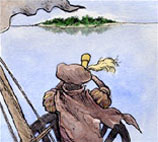
 Florida has the longest winemaking history in the North America, with the first wine made here 300 years before California became a state. Since then, winemakers have planted and replanted thousands of acres of vines, ever-searching for the right ecological key. Vignerons repeatedly attempted to grow the desirable vinifera varietals, but due to the tropical climate, and most recently to Pierce’s disease, they failed. During the 1930s, with the help of the University of Florida, more ecologically suitable clones of the indigenous Muscadine were developed. Next came the development of the Florida bunch varietals. Crossing traditional cluster varieties with Muscadines, researchers produced thin-skinned, disease-resistant grapes, able to grow in large clusters. Today, the bunch varietals found here are: Stover, Blanc Du Bois, Swanee and Miss Blanc. Florida’s wineries are spread across the state. With a built-in tourism market and the desire to continue developing technical and vineyard practices, Florida could be a viticultural promised land.
Florida has the longest winemaking history in the North America, with the first wine made here 300 years before California became a state. Since then, winemakers have planted and replanted thousands of acres of vines, ever-searching for the right ecological key. Vignerons repeatedly attempted to grow the desirable vinifera varietals, but due to the tropical climate, and most recently to Pierce’s disease, they failed. During the 1930s, with the help of the University of Florida, more ecologically suitable clones of the indigenous Muscadine were developed. Next came the development of the Florida bunch varietals. Crossing traditional cluster varieties with Muscadines, researchers produced thin-skinned, disease-resistant grapes, able to grow in large clusters. Today, the bunch varietals found here are: Stover, Blanc Du Bois, Swanee and Miss Blanc. Florida’s wineries are spread across the state. With a built-in tourism market and the desire to continue developing technical and vineyard practices, Florida could be a viticultural promised land.
|
|
Current Feature
In the southern Blue Ridge Mountains of North Carolina and Georgia vineyards are small and few, yet the establishment of the Upper Hiwassee Highlands could bring much more.
[>] continue
Related Features
Alive & Well here

Muscadine:
At home in the humidity of Florida, you yield more fruit than the an orange grove in December. Yes, you
[>] continue

 Gregory McCluney
Gregory McCluney